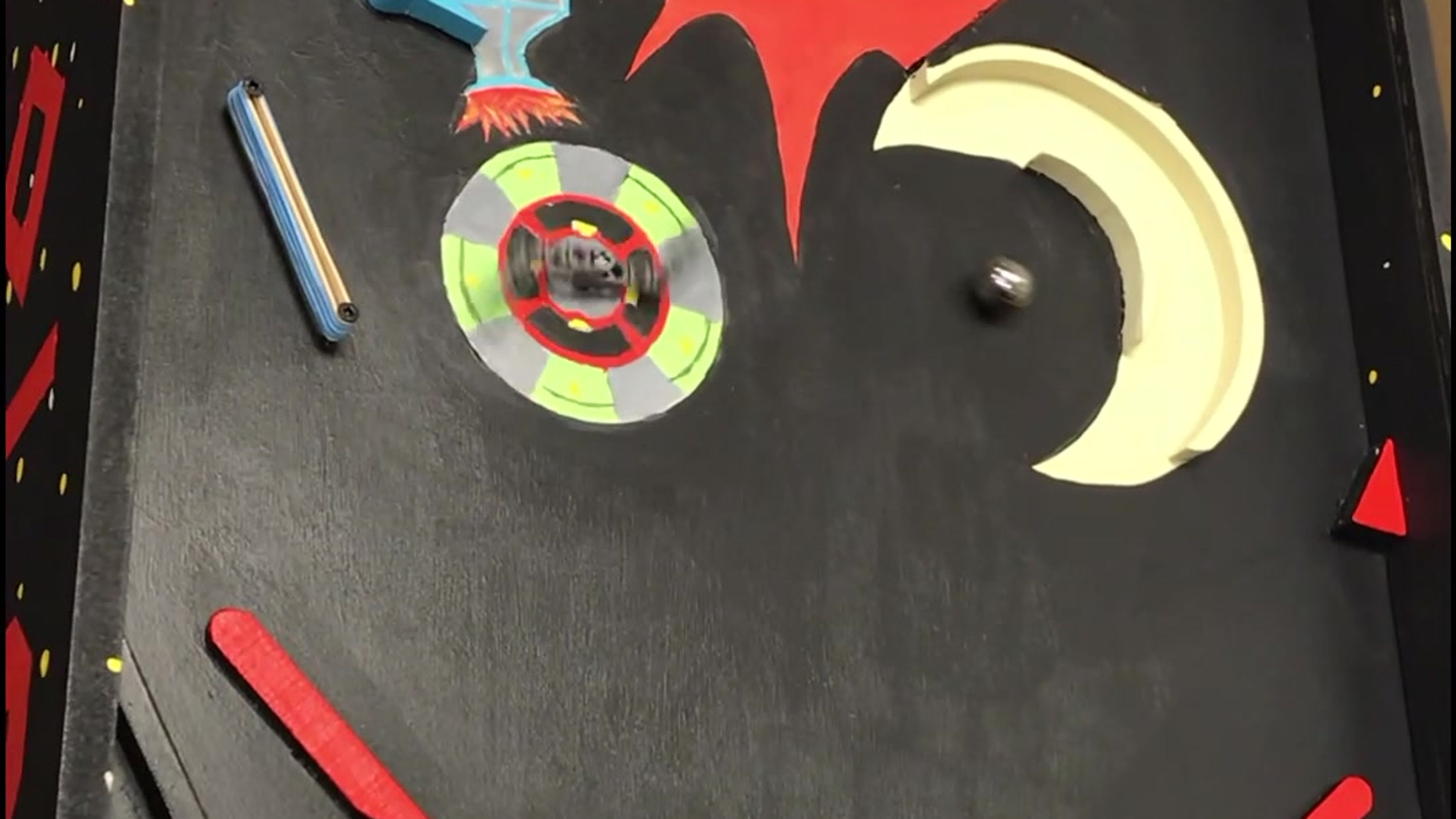top of page

Pinball Machine
Design Summary
The Challenge
This was built for a 1A Final Project in 3 weeks. We used RobotC/C++ in conjunction with a Lego EV3 to control the machine. I was responsible for the mechanical design and construction of the project.
We used 2 touch sensors as flipper input, 1 ultrasonic sensor for the ball detection, and 1 sensor port for the Tetrix Prime servo motor adapter. We also used motors for the ball release and ball launching mechanisms, as well as 2 motors for rotating field obstacles.
The project was built using Lego and ½” MDF. The box was 31”x19”x8” and weighed approximately 35 lbs. We chose MDF because it was cheap and easy to manufacture.
The most challenging parts about this project were designing a ball launching, a ball release, and a ball detection system that would be able to handle a game where multiple balls could be in play. Originally, the ultrasonic sensor was going to scan a ball after it fell down a tube but, the sensor was not accurate enough. After some testing, I came up with the idea of a seesaw like mechanism that would block the ultrasonic sensor after a ball has fallen down. This change in the sensors reading would indicate that a ball had been lost therefore, the ball count in the code would be decreased.

Pinball regular gameplay
 |  |  |
|---|---|---|
 |  |
bottom of page